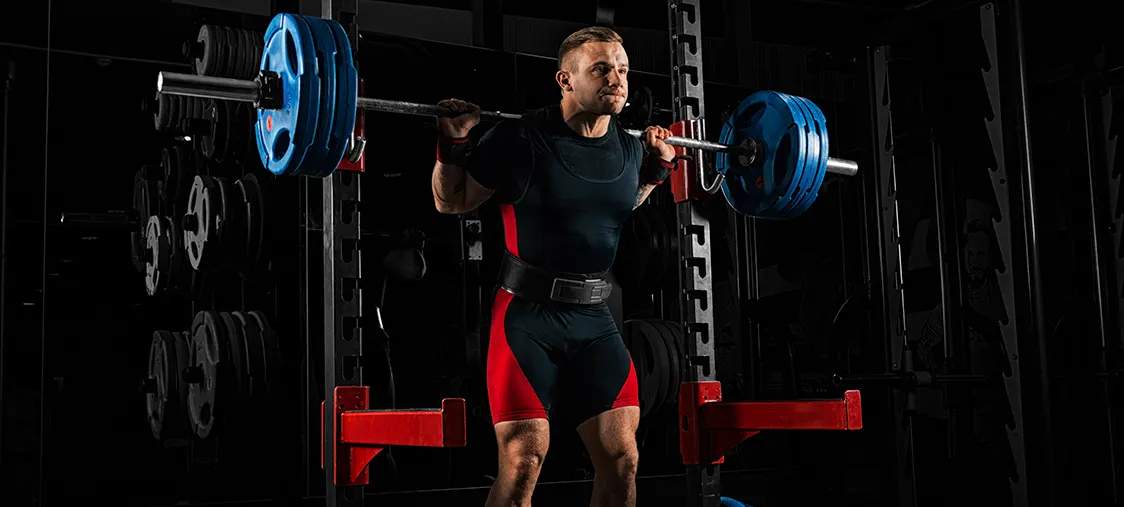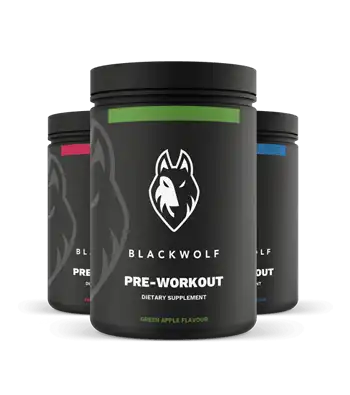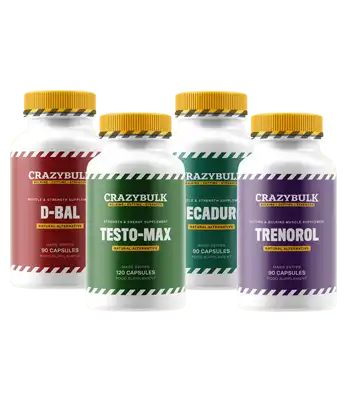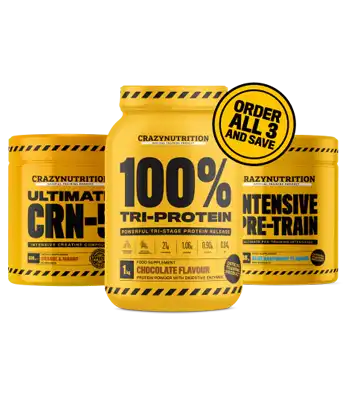This guide aims to provide a comprehensive understanding of these belts, discussing their significance for both men and women and how they cater to specific needs like lower back support or conditions like an umbilical hernia.
In navigating this landscape, we will delve into different types, including the best weight lifting belt for big guys, the best women’s weight lifting belt for CrossFit, and the revered best lifting belt reddit communities often discuss.
Whether you’re looking for a weight lifting back brace, a deadlifting belt, or just the best gym belt to enhance your training regime, this is for you. Let’s embark on this journey to understand more about these crucial fitness accessories.
Best Weightlifting Belts
Best Weightlifting Belt Overall:
DMoose Dip Belt With Chain
Best Lever Weightlifting Belt:
DMoose 10MM Lever Belt
Best Budget Weightlifting Belt for Powerlifting:
REP Fitness 4” Premium Lifting Belt
Best Weightlifting Belt for Women:
Inzer Forever Lever Belt
Best IPF Approved Belt:
IronBull Strength 10mm Weightlifting Belt
Best Weightlifting Belt for Powerlifting:
Dark Iron Fitness Weight Lifting Belt
Best Weightlifting Belt for Support:
Rogue 5″ Nylon Weightlifting Belt
Most Comfortable Weightlifting Belt:
Gymreapers Quick Locking Weightlifting Belt
Our Top Picks
#1 DMoose Dip Belt With Chain
Key Specifications:
- Material: Neoprene Belt,
- Chain Length: 36”,
- Colours: 5 Options,
- Tested Weight Capacity: 350 Lbs.
What we love:
- Affordable price under $30
- Supports up to 350lbs of weight
- Reinforced stitching for durability
- 6-inch lumbar support
What to consider:
- Some users found it rigid and uncomfortable
- Limited size options
- Basic design lacks padding
Why we choose DMoose Dip Belt:
DMoose Dip Belt provides an inexpensive option for weighted exercises at an affordable price. However, some may find the belt rigid. Consider other options if comfort is important. It gets the job done for lightweight exercises on a tight budget.
Overview
DMoose Dip Belt, designed for serious weightlifting enthusiasts, strikes a balance between affordability and sturdy construction. With standout elements such as 6-inch lumbar support, a coated D-ring for secure weight attachment, and reinforced stitching, it ensures durability and effectiveness. It has been put to the test with weights up to 350 lbs, affirming its robust construction.
It comes in five Colour options and features a 36-inch chain, adding to its appeal. However, it’s worth noting that comfort levels vary among users. Some reports suggest the belt feels rigid and may not suit everyone. The product also comes with a 30-day money-back guarantee, adding an extra layer of consumer confidence. Although the DMoose Dip Belt meets the high standards for hardcore fitness enthusiasts, individual comfort levels should be considered before purchase.
#2 DMoose 10MM Lever Belt
Key Specifications:
- Material Type: Leather
- Size: XXL 45” (Waist Size)
- Made In: USA
- Closure Type: Buckle
- Thickness: 10mm
- Colour: Black, Brown, American
- Department: Unisex-Adult
- Sport Type: Weightlifting, Powerlifting
What we love:
- Durable 10mm thick leather belt
- Adjustable quick-release buckle for a customized fit
- 4-inch wide lumbar panel for back support
- Included carrying case for storage and transport
- Made in the USA
What to consider:
- Higher price point than basic belts
- May be overkill for casual gym-goers
- Limited size options
Why we choose DMoose 10mm Lever Belt:
DMoose 10mm Lever Belt is a high-quality option designed to support serious lifters during intense workouts. Its durable construction and customizable fit provide optimal support and safety. However, the higher price may not be justified for occasional gym use. It’s best suited for frequent heavy lifters.
Overview
Designed for the serious weightlifter, the DMoose 10mm Lever Belt offers the support and durability you need for safe and effective training. It boasts a robust design, featuring a 4-inch wide lumbar support and a sturdy 10mm thickness, ideal for stable, powerful lifts. The belt is adjustable and includes a quick-release buckle and 11 perforated holes, offering a custom fit.
Adding to the convenience, the product comes with a carrying case, simplifying transportation and storage. The DMoose 10mm Lever Belt is aimed at enhancing your workout performance without compromising convenience.
Available in sizes ranging from S (23”) to XXL (45”), it caters to diverse waist sizes. It’s crafted from high-quality leather and comes in three Colour choices – Black, Brown, and American, appealing to a variety of preferences.
Despite being a unisex product, it’s primarily used in sports such as weightlifting and powerlifting. This USA-made product ensures top-notch quality and durability.
#3 REP Fitness 4” Premium Lifting Belt
Key Specifications:
- Size: S – XXL
- Material: Vegetable-tanned leather
- Thickness: 10mm
- Width: 4″
- Closure: Single-prong buckle
- Colour: Varies
- Sport Type: Weightlifting, Powerlifting
- Country of Origin: Not U.S.
What we love:
- Quick break-in period for comfort during use
- Durable burnished and sealed edges
- Classic leather look
- Inexpensive alternative to more expensive belts
What to consider:
- Single-prong closure is less adjustable than multi-prong
- Sizing may not be ideal for those in between sizes
- Not made in the USA
Why we choose Rep Premium Lifting Belt:
Rep Premium Lifting Belt provides a durable and affordable option for heavy lifting. While the single-prong closure and sizing limitations could be improved, it offers a comfortable fit with a quick break-in at a lower price point than some competitors. Suitable for frequent gym-goers on a budget.
Overview
Designed for serious lifters, the REP Fitness 4″ Premium Lifting Belt is a sturdy and reliable choice. It boasts a quick break-in period due to its vegetable-tanned leather construction and ensures long-lasting durability with its sealed and burnished edges. It presents a classic aesthetic appeal with its tanned leather look. However, it’s not without its drawbacks.
The single-prong closure may be less secure for some, and the sizing can be problematic for those in between sizes. While it serves as a cost-effective alternative to the Rogue Ohio belt, it is not manufactured in the U.S. The REP Premium Lifting Belt is built to endure and provide comfortable stability even during your most demanding lifts.
The single-prong buckle design enables swift and easy adjustments while assuring a firm fit. It is available in sizes ranging from S to XXL and features 10 holes for various athlete sizes per belt size. With a thickness of 10mm, it ensures no break-in period, and the burnished and sealed edges provide superior moisture resistance. The 4″ width offers sufficient support for heavy lifting.
#4 Inzer Forever Lever Belt
Key Specifications:
- Made In USA: Yes
- Colour: Varies
- Width: 4″
- Thickness: 10 MM
- Material: Leather
- Fastening System: Lever
What we love:
- 10mm thickness for comfort during lifting
- Lever buckle allows quick tightening and loosening
- Holds tighter than standard buckles
- Lifetime warranty on materials and workmanship
What to consider:
- Higher price than some options
- Lever buckle is not preferred by some
Why we choose Inzer Forever Belt:
Inzer Forever Belt offers a premium leather belt with a lever buckle design for maximum strength and adjustability. While costly, it provides superior materials and a lifetime guarantee, making it a durable option for serious lifters looking for the best.
Overview
The Inzer Forever Lever Belt, featuring a manageable 10mm thickness, is designed with high-intensity lifters in mind. This belt’s thinner profile offers a comfortable fit that shapes your body more quickly, without compromising support or durability. The patented Lever system makes it a breeze to tighten, and with a quick flick, loosening is equally effortless. This Lever system also provides more secure fastening, with up to three inches tighter fitting than standard buckles.
Crafted from a single, solid layer of exclusive, select leather, the Inzer Forever Lever Belt is not merely a combination of glued layers found in some other brands, but a true testament to quality. It features a unique Reinforced Leather™ component that speeds up the breaking-in process and retains your form over time. The belt’s finishing touch is a fine, non-slip suede surface.
Four rows of lock-stitched, corrosion-resistant, high-density nylon add to its durability. The belt’s edges, while refined, are not rounded to maintain the competition’s legal width in entirety. Over time, this belt adapts to your body shape, providing consistent support without succumbing to softness or folding.
#5 IronBull Strength 10mm Weightlifting Belt
Key Specifications:
- Made In USA: No
- Colour: Varies
- Width: 4″
- Thickness: 10 MM
- Material: Leather
- Fastening System: Double Prong
What we love:
- 10mm thickness provides support for heavy lifts
- Conforms to the body for lumbar support and stability
- Durable double-stitching construction
- Fully adjustable with 10 rows of holes
What to consider:
- Not made in the USA
- Roller prong fastening is not preferred by some
Why we choose Iron Bull Strength powerlifting belt:
Iron Bull Strength powerlifting belt aims to maximize performance for serious lifters with its 10mm thickness and supportive design. While not US-made, the heavy-duty materials and double stitching provide durability for heavy training. It can help boost strength and stability for back squats and deadlifts.
Overview
The Iron Bull Strength Powerlifting Belt is engineered to enhance performance, providing stability, safety, and ultimate comfort. It boasts a robust 10mm thickness—a perfect blend of support and ease, making it an ideal companion for power training endeavors. Double stitching fortifies the belt, ensuring its longevity despite intense use.
Powerlifting belts are beneficial for those who engage in heavy lifting as they amplify the intra-abdominal pressure, lending you a more secure feeling and increased core stability. This boost is particularly advantageous when lifting hefty weights or undertaking heavy squats.
Key features of the Iron Bull Strength Powerlifting Belt include its robust and thick 10mm construction, the 4-inch wide durable suede leather material, a double roller prong system, and double stitching for enhanced durability. Adjustability is no issue with a convenient 10-row hole system.
#6 Dark Iron Fitness Power Belt
Key Specifications:
- Material : Leather
- Closure Type : Buckle
- Waist (cm) : 31 Inches
- Product Dimensions : 44″L x 4″ W
- Item Thickness : 5 Millimeters
What we love:
- Made from durable top-quality cowhide leather
- Double-prong buckle ensures a secure fit
- Provides firm support for heavy lifting
- Comfortable non-slip, adjustable design
- Reduces risk of injury during lifts
What to consider:
- May not suit all lifting styles
- Limited to only one color (black)
- Some may prefer thicker belts
- Requires proper care for long-lasting durability
Why We Choose Dark Iron Fitness Power Belt
It is ideal for serious weightlifters due to its superior construction and ergonomic design. Made from premium cowhide leather, it’s strong and durable, providing the boost needed for heavy lifts without risking injury. Unlike cheaper belts that stretch or break, this belt offers consistent performance, making it a worthwhile investment for serious lifters.
Overview
Dark Iron Fitness Power Belt is designed for serious lifters needing reliable core and back stability during workouts. Made from genuine cowhide leather, it is both sturdy and comfortable. The double-prong buckle ensures a secure fit, so the belt stays in place and doesn’t come off during exercise.
With a non-slip, adjustable leather design, this belt is popular among customers for comfort during long workouts. Its strong leather construction reduces spine strain, helping lifters focus on performance and avoid back injury. Additionally, the heavy-duty buckle, appreciated by many, ensures the belt stays secure, unlike cheaper options.
Dark Iron Fitness Power Belt with 5 mm thickness and double prong fastening offers durability and comfort. It helps lifters generate more core power, boosting strength and reducing injury risk.
#7 Rogue 5″ Nylon Weightlifting Belt
Key Specifications:
- Waist (cm) : 29 Inches
- Product Dimensions : 40″L x 5″ W
- 5” Nylon Belt (12.7 cm) with 3” Support Strap (7.6 cm)
- Steel Tensioning Buckle
- Sizing (waist size) L 35-40″
What we love:
- Provides excellent abdominal and back support
- Lightweight and durable for intense workouts
- Easy to adjust with Velcro strap
- Affordable alternative to leather belts
- Wide coverage for maximum stability
What to consider:
- Not made in the USA
- May not suit advanced lifters
- Velcro may wear over time
- Sizing is crucial for effectiveness
Why We Choose Rogue 5″ Nylon Weightlifting Belt
For those looking to save on a specialized weightlifting belt, Rogue 5″ Nylon Weightlifting Belt offers great support and comfort. It features a wider back section and easy Velcro fastening, making it suitable for various lifting exercises. Durable and easy to use, this belt is ideal for lifters who need support without bulk.
Overview
Designed for lifters needing maximum abdominal and back support under heavy loads, the Rogue 5″ Nylon Weightlifting Belt offers top protection. It provides 3″ of support in the front and 5″ in the back, allowing you to perform challenging workouts while contouring to your body’s shape. The lightweight nylon material is durable yet comfortable.
Customers prefer using the belt’s hook and loop system for easy adjustments during workouts. Users find it ideal for transitioning from lighter to heavier lifts, thanks to the steel tensioning buckle that keeps it tight. It’s especially favored as a more flexible alternative to leather belts.
Many customers say the belt is durable enough for intense workouts. It provides great support without pinching or scratching and is favored for squats, deadlifts, and other compound movements. However, some users note that proper sizing is crucial for optimal support.
#8 Gymreapers Quick Locking Weightlifting Belt
Key Specifications:
- Material : Nylon
- Closure Type: Buckle
- Item Dimensions LxWxH : 27 x 4 x 0.04 inches
- Brand : Gymreapers
- Color : Black
What we love:
- Quick-lock buckle ensures a secure fit
- Adjustable velcro for custom pressure
- Ideal for CrossFit, weightlifting, powerlifting
- Lightweight and easy to adjust
- Lifetime warranty for peace of mind
What to consider:
- Limited color options available
- Not ideal for intense powerlifting sessions
- Sizing may run slightly small
Why We Choose Gymreapers Quick Locking Weightlifting Belt
Gymreapers Quick Locking Weightlifting Belt, known for its durability and ease of use, is ideal for CrossFit athletes, bodybuilders, and Olympic lifters. It has a quick lock buckle for a secure fit and an adjustable velcro strap for custom pressure, offering support and flexibility. This belt is a reliable long-term investment with a lifetime warranty.
Overview
Gymreapers Quick Locking Weightlifting Belt provides excellent back support for weightlifters, CrossFitters, and functional fitness enthusiasts. Its quick-locking steel buckle ensures secure and easy use, allowing users to adjust the velcro strap on the fly. Comfortable and functional, this belt is perfect for heavy squats or back support during snatches.
The belt is popular with customers for its versatility, ease of use, and security. Its lightweight design makes it ideal for both new and experienced lifters. Plus, it comes with a lifetime warranty for peace of mind.
It comes in various sizes and colors for preferred anonymity with specific features for athletes. This belt boasts a high customer rating, delivering on performance, quality, and comfort, making it a go-to choice for serious athletes.
What is a Weightlifting Belt And Who Should Use a Weightlifting Belt?
A weightlifting belt is more than just a strip of material you wrap around your waist. It’s a functional tool to support your body during intense lifting exercises. These belts typically feature a sturdy yet flexible material, often with a secure closure to ensure a snug, supportive fit. Their primary role is to stabilize and reduce stress on the lower back[1], enhancing your lifting safety and efficiency.
For the general gym-goer, a weightlifting belt can be a valuable asset. It helps maintain proper posture and alignment[2], especially during heavy squats and deadlifts. This isn’t just about lifting heavier weights; it’s about doing it safely and effectively.
Men and women might have different requirements due to body shape and size variations. Women’s weightlifting belts, for instance, are often designed to accommodate a shorter torso and a wider hip structure. This tailored approach ensures optimal comfort and effectiveness.
What To Look For In A Weightlifting Belt
Selecting the perfect weightlifting belt is essential to elevate your training experience, ensuring safety and comfort. The choice of the best weight lifting belt varies greatly based on personal needs, whether you’re a dedicated powerlifter, a dynamic CrossFit participant, or a general fitness enthusiast. When choosing, consider these crucial factors:
Material
- Leather Belts: Known for their durability, leather belts are often regarded as the best weight lifting belts, especially for men in heavy powerlifting. They provide the robust support necessary for lifting substantial weights.
- Synthetic Materials: Belts made from materials like nylon offer flexibility and breathability, ideal for varied movements. The best women’s weight lifting belt for CrossFit might be nylon, offering a range of motion critical in diverse workouts.
Width and Thickness
- For Heavy Lifters: A wider and thicker belt, often the best weight lifting belt for big guys, provides substantial support for heavy lifting but may restrict movement.
- For General and Dynamic Lifting: A moderately wide and thick belt is ideal, offering enough support without limiting movement, making it the best weight lifting belt for CrossFit.
Closure Type
- Buckle Closures: These allow customizable fit adjustments, ideal for those whose waist sizes vary.
- Lever Closures: The best lever belt for a quick and secure latch, suitable for consistent waist sizes.
- Velcro Closures: Common in nylon belts, these offer easy adjustability, preferred in dynamic exercises like CrossFit.
Special Considerations
- For Women: The best weight lifting belt for women often has a contoured design for a natural fit, accommodating wider hips and narrower waists.
- For Larger Builds: Look for belts offering sufficient width and thickness, like the weight lifting belt for big guys, ensuring adequate support for a larger frame.
- For CrossFit Enthusiasts: A balance of support and flexibility is key, with closure systems allowing quick adjustments, making it the best weight lifting belt for CrossFit.
Lever Belts Versus Traditional Belts
Choosing the right weightlifting belt often involves deciding between lever and traditional buckle belts. Each type has distinct features and advantages, catering to different lifting styles and preferences.
Lever Belts
- Mechanism: Lever belts, often considered the best lever belt in weightlifting circles, are equipped with a lever closure system. This design allows for a quick, secure lock and easy adjustment, always providing a consistent fit.
- Advantages: The primary advantage of a lever belt lies in its ease of fastening and unfastening. This is particularly beneficial in training sessions with varying intensity levels, as they offer uniform tightness crucial for heavy lifts.
- Use Cases: The best powerlifting belts are typically lever belts, favored by powerlifters and those engaged in heavy lifting. They provide a stable, consistent level of support[3] for exercises like squats and deadlifts, where a rigid torso is crucial for performance and safety.
Traditional Buckle Belts
- Mechanism: Traditional buckle belts, such as the best weight lifting belt or the best gym belts, typically feature a prong and hole system. They can come with a single or double prong, offering a traditional approach to securing the belt.
- Advantages: The major advantage of traditional buckle belts is their adjustability. They can be tightened or loosened to various degrees, allowing for more flexibility and comfort across different exercises.
- Use Cases: Traditional buckle belts are often the choice of general fitness enthusiasts, bodybuilders, and those needing flexibility in their training regimen. They are especially useful in workouts requiring a broader range of motion, such as Olympic lifting or dynamic movements in CrossFit.
How To Take Care of Your Weightlifting Belt
Proper maintenance of your weightlifting belt is essential for ensuring its longevity and effectiveness. A well-cared-for belt not only provides better support during lifts but also helps you avoid the need for frequent replacements. Here are key steps to take care of your weightlifting belt:
Regular Cleaning
- Leather Belts: For leather belts, like Element 26 Hybrid Leather Weightlifting Belt or the best powerlifting belts, use a leather cleaner or mild soap. Avoid harsh chemicals, as they can damage the leather, causing it to dry out and crack.
- Nylon or Synthetic Materials: Belts made of nylon or other materials, such as the best weight lifting belt for CrossFit or the best women’s weight lifting belt for CrossFit, should be cleaned with mild detergent and warm water. Ensure they are completely dry before storing them to prevent mold and mildew.
Proper Storage
Store your belt, whether it’s the best weight lifting belt or a specialized deadlifting belt, in a cool, dry place. Avoid direct sunlight or damp areas, which can accelerate material degradation. Avoid excessive folding of the best squat belt, to maintain its shape and structural integrity.
Regular Inspection
Periodically inspect your belt, whether it’s the best lever belt or a standard lifting belt, for signs of wear such as cracks, fraying, or a weakening closure system. Pay special attention to areas under stress, like the stitching and buckle, which are prone to wear.
Avoid Unnecessary Stress
Refrain from over-tightening your belt, whether it’s the best lifting belt for women or the weight lifting belt for big guys, as this can strain the material. Use the belt judiciously; over-reliance can lead to weakened core muscles.
When to Replace Your Belt
You must understand the right time to replace your weightlifting belts. Here are two things you need to know:
- Consider replacing your belt, whether the best weightlifting or squatting belt, if it shows significant wear or no longer provides adequate support.
- A change in body size or shape may necessitate a new belt to ensure a proper fit, especially important for belts like the best weight lifting belt for umbilical hernia.
By following these care instructions, you can extend the life of your belt, whether it’s the best lifting belts, the best weightlifting belts, or the best powerlifting belts. Proper care ensures not just durability but also safety and efficiency in your lifting regimen.
 Conclusion
Conclusion
As we wrap up this comprehensive guide on weightlifting belts, it’s evident that the right choice can significantly impact your training effectiveness. The key lesson here is the importance of selecting a weightlifting belt that aligns with your unique needs, training style, and comfort preferences.
For novices and seasoned lifters, the decision should be based on individual training requirements, body type, and comfort. It’s crucial to recognize that the best weightlifting belt for powerlifting might not be the ideal choice for dynamic CrossFit routines. Similarly, a belt perfect for someone focusing on squats, like the best squatting belts, may not be the best fit for another whose main exercise is deadlifting.
In your search for the perfect weightlifting belt, whether it’s the best weight lifting belt for women, the best weight lifting belt for men, or the best weight lifting belt for big guys, consider critical aspects like material, closure type, width, and level of support. These should complement your workout regime and goals. A carefully chosen belt, such as the best weightlifting belt or the best powerlifting belt, does more than enhance performance; it plays a vital role in preventing injuries and boosting your confidence in lifting.
In essence, the best weightlifting belt is not about brand popularity or trending styles. It’s about finding what suits you, what aids your lifting journey, and what helps you reach your fitness goals safely and effectively.
















